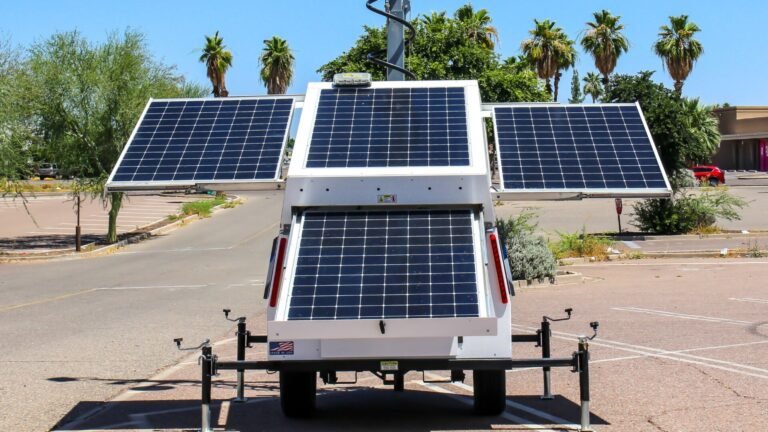The rise of solar energy as a sustainable power source has been one of the defining developments of the 21st century, driven by global initiatives to combat climate change and reduce dependence on fossil fuels.
As of 2024, the global installed solar capacity has surpassed 1,000 gigawatts (GW), a testament to the world’s accelerating shift towards renewable energy.
However, this impressive growth brings with it new challenges, particularly regarding the disposal and recycling of photovoltaic panels. With millions of panels reaching the end of their 25-30 year lifespan, the industry faces an urgent need to address the environmental impact of solar panel waste.
The recycling of these panels is not just a logistical challenge but a critical step towards sustaining the environmental integrity of solar energy.
Tamesol, a leading player in the global solar energy sector, has been at the forefront of providing innovative and sustainable solar solutions since its inception.
Known for its high-quality photovoltaic panels, Tamesol is committed to advancing solar technology while emphasizing environmental sustainability.
As the industry grapples with the challenges of recycling solar panels, Tamesol stands out by actively participating in eco-friendly practices and promoting the circular economy within the solar sector.
Tamesol’s dedication to reducing the carbon footprint and enhancing the lifecycle of solar products sets a benchmark for responsible solar manufacturing and deployment.
Tamesol’s approach not only reflects their commitment to clean energy but also their understanding of the importance of sustainable industry practices for future generations.
This blog delves into the top five challenges in recycling solar panels in 2024, highlighting the complexities involved and the pressing need for efficient, sustainable solutions to maintain the sector’s green credentials.
1. Lack of Standardization in Solar Panel Composition
The solar industry’s growth has been monumental, with global solar PV capacity reaching unprecedented levels. However, this rapid expansion has led to significant variability in solar panel composition.
Panels are constructed from a multitude of materials, including various types of silicon, metals like copper and aluminum, and precious materials such as silver and gallium.
This diversity, while beneficial for innovation and performance optimization, poses substantial challenges for recycling processes.
For example, First Solar, an American photovoltaic manufacturer, has developed a unique thin-film module technology that differs significantly from the conventional crystalline silicon panels used by the majority of manufacturers.
This variance in materials necessitates distinct recycling approaches, which complicates the standardization of recycling processes.
As a result, while First Solar has established a successful recycling program for its panels, recycling facilities for traditional silicon panels are still struggling to find a one-size-fits-all solution.
Moreover, the International Renewable Energy Agency (IRENA) estimates that there could be as much as 78 million metric tons of global solar panel waste by 2050, highlighting the urgent need for standardized recycling protocols.
The lack of standardization not only hinders the efficiency of recycling efforts but also impacts the economic viability of the process, as specialized procedures need to be developed for different panel types.
To address these issues, there is a growing push within the industry for the adoption of universal design standards and materials. By standardizing certain aspects of solar panel construction, recycling processes can be streamlined, reducing costs and environmental impact.
This would not only make recycling more feasible and efficient but also pave the way for a more sustainable solar industry. Implementing such changes requires collaboration among manufacturers, recyclers, and policymakers to create a cohesive framework that supports the lifecycle of solar products.
2. Economic Viability
The economic viability of recycling solar panels is a multifaceted challenge directly influenced by the lack of standardization in panel composition.
As recycling processes differ significantly due to the diverse materials and technologies used in solar panels, the cost of recycling can often exceed the potential profit from recovered materials.
For example, while the cost of recycling a standard silicon-based solar panel might be relatively straightforward, the cost associated with recycling advanced thin-film panels, like those produced by First Solar, can be significantly higher due to their unique material composition.
This economic challenge is highlighted by the fact that the global value of recovered materials from solar panel recycling is projected to reach $450 million by 2030, according to a report by IRENA.
However, this potential is currently undermined by the high costs associated with the recycling process, which can vary widely depending on the types of panels and the technologies required to dismantle and process them.
Furthermore, companies like Veolia, a global leader in optimized resource management, have started to develop specialized recycling facilities capable of handling the complexities of different solar panel types.
Yet, these initiatives are still in their infancy and are not widespread enough to address the global scale of solar waste.
To improve the economic viability of solar panel recycling, there needs to be a concerted effort to reduce recycling costs through technological innovation and process efficiency.
Standardizing materials and design elements where possible could lead to more uniform recycling processes, reducing operational costs and increasing the value of recovered materials.
Additionally, creating stronger markets for recycled materials and ensuring regulatory support for recycling initiatives are crucial steps toward making solar panel recycling not just environmentally necessary but also economically attractive.
3. Limited Collection and Logistics Infrastructure
The challenge of establishing a comprehensive collection and logistics infrastructure for solar panel recycling is intricately linked to the economic and standardization issues faced by the industry.
Without a standardized approach to solar panel design and materials, creating an efficient and cost-effective collection system becomes significantly more complex.
This complexity is compounded when considering the geographic spread and varying sizes of solar installations, from residential rooftops to large-scale solar farms.
For instance, Europe has made strides with its Waste Electrical and Electronic Equipment (WEEE) Directive, which includes provisions for the collection and recycling of end-of-life solar panels.
However, despite these regulations, the continent still faces logistical hurdles due to the diversity of panel types and the lack of a unified collection system.
In contrast, the lack of similar comprehensive legislation in other regions, such as the United States and Asia, leads to an even more fragmented approach to solar waste management.
The logistical challenges are further exemplified by the varied lifespans of solar panels, typically ranging from 25 to 30 years. This means that panels installed in different years will reach the end of their life at different times, necessitating ongoing collection efforts that can adapt to fluctuating volumes of solar waste.
Improving the collection and logistics infrastructure requires not only investment in transportation and processing facilities but also collaboration between manufacturers, governments, and recycling companies to develop standardized procedures for handling and transporting end-of-life panels.
By establishing designated collection points, implementing reverse logistics from installation sites, and developing scalable processing capabilities, the industry can make significant strides toward efficient recycling.
Additionally, public awareness campaigns and incentives for returning used solar panels can drive participation in recycling programs, ultimately supporting a more sustainable and circular solar economy.
4. Environmental and Health Risks
The environmental and health risks associated with recycling solar panels are underpinned by alarming statistics. For instance, a typical solar panel can contain up to 5 grams of lead and smaller amounts of other toxic metals like cadmium and chromium.
Given that the global solar capacity is expected to exceed 1,000 GW, the cumulative amount of hazardous materials in end-of-life panels is significant.
Research indicates that improper disposal of these panels can lead to the leaching of toxic substances into the environment, posing severe health risks.
For example, lead exposure can result in neurological disorders, and cadmium exposure is linked to kidney failure and bone diseases. Despite these risks, only a fraction of end-of-life solar panels are currently processed in facilities equipped to handle hazardous waste.
Addressing these risks requires a global effort to standardize recycling processes, enhance safety protocols, and increase awareness of the hazards associated with solar panel disposal.
Investing in research and development for safer recycling technologies and providing adequate training for workers are critical steps toward mitigating the environmental and health impacts of solar panel recycling.
5. Regulatory Hurdles and Lack of Awareness
Finally, regulatory hurdles and a lack of awareness among stakeholders present significant challenges. In many countries, the legal framework governing solar panel recycling is still evolving, leading to uncertainty and inconsistency in recycling practices. Additionally, there is a lack of awareness among consumers, manufacturers, and policymakers about the importance of solar panel recycling. Promoting education and awareness, alongside developing clear regulations, is essential to encourage proper recycling practices and ensure that solar energy remains a truly sustainable option.
Conclusion
As the solar industry continues to grow, addressing the challenges of recycling solar panels becomes increasingly important. Overcoming these obstacles requires concerted efforts from manufacturers, policymakers, recyclers, and consumers.
Innovation in recycling technologies, development of standardized procedures, economic incentives, and robust regulatory frameworks are all crucial for creating a sustainable lifecycle for solar panels.
By tackling these challenges head-on, the solar industry can continue to thrive while minimizing its environmental footprint.
The journey towards sustainable solar energy is complex, but with the right measures, the challenges of recycling solar panels can be turned into opportunities for innovation and progress.
As we move forward, it is vital to keep sustainability at the core of the solar industry’s agenda, ensuring that this green energy source remains beneficial for both the planet and future generations.
Tamesol can contribute significantly to the development of a more sustainable solar industry.
Their commitment to innovation and sustainability can pave the way for a future where solar energy remains not only a symbol of clean power but also of environmental responsibility and circular economy principles.





